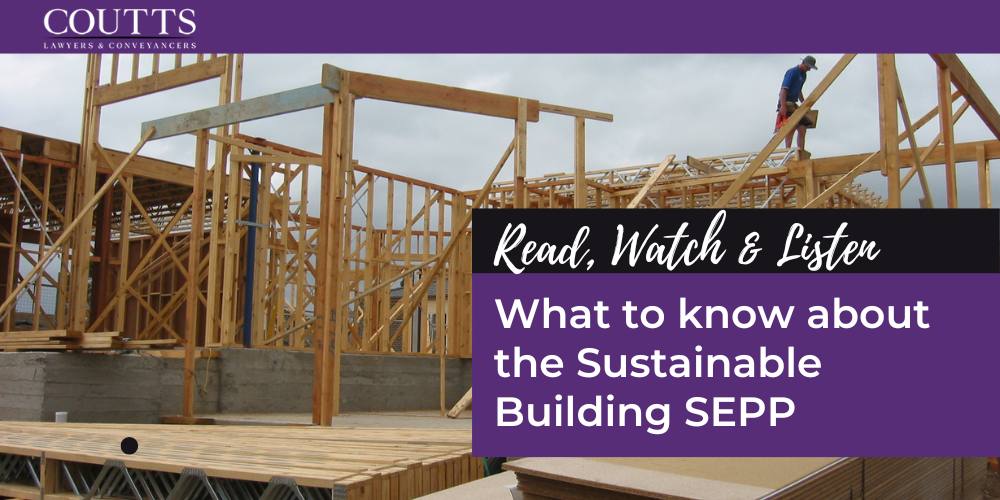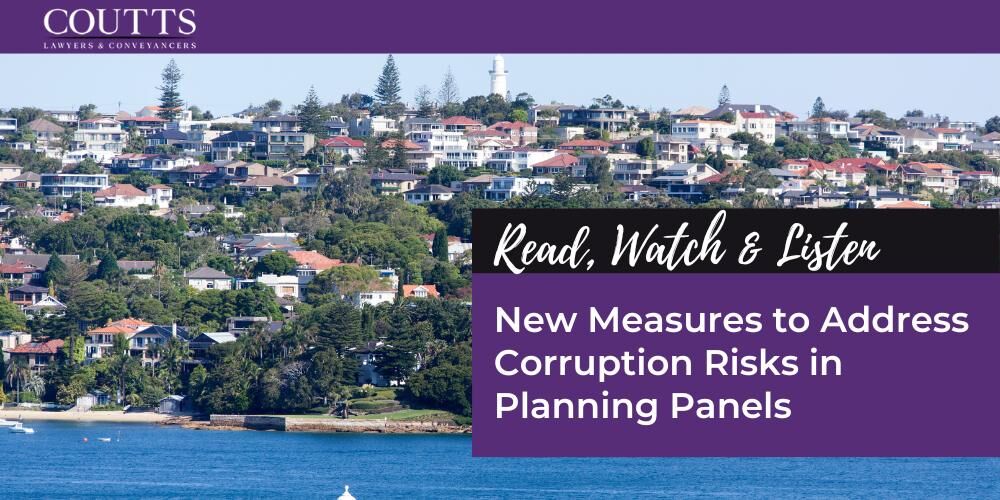KEY TAKE-OUTS:
- Commencement: The State Environmental Planning Policy (Sustainable Buildings) 2022 (Sustainable Buildings SEPP) will commence on 1 October 2023.
- Retrospective application: The SEPP will not apply to development applications or modification applications that have already been submitted, but not yet determined by the commencement date.
- Key Purpose: The reduction of greenhouse gas emissions through the design and construction of residential and non-residential buildings
Background: How was the Sustainable Building SEPP developed?
On 29 August 2022, the NSW Government announced the introduction of the Sustainable Buildings SEPP.
Over the past two years, the Government has been in consultation with industry, council, and community representatives in order to develop this SEPP. The consultation period has enabled the Government to ensure the SEPP reflects the building and construction industry’s commitment towards sustainability as well as the Government’s commitment to achieving net zero emissions in NSW by 2050.
What does the Sustainable Buildings SEPP do?
The Sustainable Buildings SEPP sets sustainability standards for both residential and non-residential development.
For residential development, the current Building Sustainability Index, known as BASIX, is incorporated into its provisions. By incorporating BASIX into the Sustainable Buildings SEPP, the current State Environmental Planning Policy (Building Sustainability Index: BASIX) 2004 will be repealed when the Sustainable Building SEPP takes effect.
For non-residential development, sustainability provisions are a new concept. The Sustainable Buildings SEPP has a focus on integrated design. This focus will require applicants to be conscious of how their design will, for example, enable the generation and storage of renewable energy.
Key Provisions to residential and non-residential development are noted below.
Notably, specific exclusions from the Chapter 3 Standards for Non-Residential Development apply, including:
- Land zoned rural, industrial, environmental conservation and waterways;
- Non-residential development that is for the purposes of infrastructure; or
- Is considered exempt and complying development.
What is the purpose and aim of implementing the Sustainable Buildings SEPP?
The NSW Government has indicated that the purpose of the Sustainable Buildings SEPP is to:
- Minimise the consumption of energy and potable water;
- Reduce greenhouse gas emissions from energy use;
- Monitor the embodied emissions of building materials; an
- Deliver buildings that are comfortable in summer and winter.
In addition to the purpose stated above, the SEPP identifies the following aims:
- Encourage the design and delivery of sustainable buildings;
- Ensure consistent assessment of the sustainability of buildings; and
- Record accurate data about the sustainability of buildings, to enable improvements to be monitored.
More broadly, the introduction of this SEPP will see the NSW Government working towards achieving targets for the reduction of greenhouse gas emissions. These targets include to reduce greenhouse gas emissions by 50% by 2030 compared to 2005 levels, and ultimately a target of net zero emissions by 2050.
Important Provisions
What are the sustainability standards for Residential Development?
Clause 2.1(1) and (2) – These clauses state that:
- Schedule 1 of the Sustainable Buildings SEPP will apply to BASIX buildings and change of use to BASIX buildings.
- Schedule 2 of the SEPP will apply to alterations of BASIX buildings and BASIX swimming pools and spas.
Schedules 1 and 2– These schedules set out the baseline standards for energy and water use as well as thermal performance for different types of BASIX development.
Energy Use and Thermal Performance
The BASIX standards for energy use and thermal performance have all increased across NSW, except for standards relating to homes located in the North Coast climate zones and small apartment buildings up to 5 storeys.
Water Use
The BASIX standards for water have remained the same.
What are the sustainability standards for Non-Residential Development?
Clause 3.2(1) – This clause sets out what a consent authority must consider in deciding whether to grant development consent. The purpose of these considerations focus on the design of the development and their ability to enable, for example:
- The minimisation of waste from associated demolition and construction;
- A reduction in peak demand for electricity;
- The generation and storage of renewable energy; and
- The minimisation of the consumption of potable water.
Clause 3.2(2) – This clause prohibits a consent authority granting development consent to non-residential development unless they are satisfied that the embodied emissions attributable to the development have been quantified.
Clause 3.3 – This clause sets out additional considerations for large commercial development.
Large commercial development is defined as, development that involved:
(a) The erection of new prescribed office premises, prescribed hotel or motel accommodation or prescribed serviced apartments, or
(b) Alterations, enlargement or extension of prescribed office premises, prescribed hotel or motel accommodation or prescribed serviced apartments, if the development has a capital investment value of $10 million or more.
Clause 3.3(1) – This clause states that a consent authority must consider whether the development minimises use of on-site fossil fuels (which does include the use of back-up electricity generators).
Clause 3.3(2) – This clause states that a consent authority must be satisfied that the development can achieve the standards set out in Schedule 3 for energy and water use. The standards in Schedule 3 are based on current NABERS Ratings.
If the proposed development meets the definition of ‘large commercial development’, Schedule 3 standards for energy and water usage apply, unless there is a NABERS commitment agreement in place in relation to achieving the standard.
When will the Sustainable Buildings SEPP take effect?
The Sustainable Buildings SEPP commences on 1 October 2023, this commencement date allows for a transition period and for technical guidance to be created.
For further information please don’t hesitate to contact Coutts Lawyers.
This blog is merely general and non-specific information on the subject matter and is not and should not be considered or relied on as legal advice. Coutts is not responsible for any cost, expense, loss or liability whatsoever to this blog, including all or any reliance on this blog or use or application of this blog by you.



